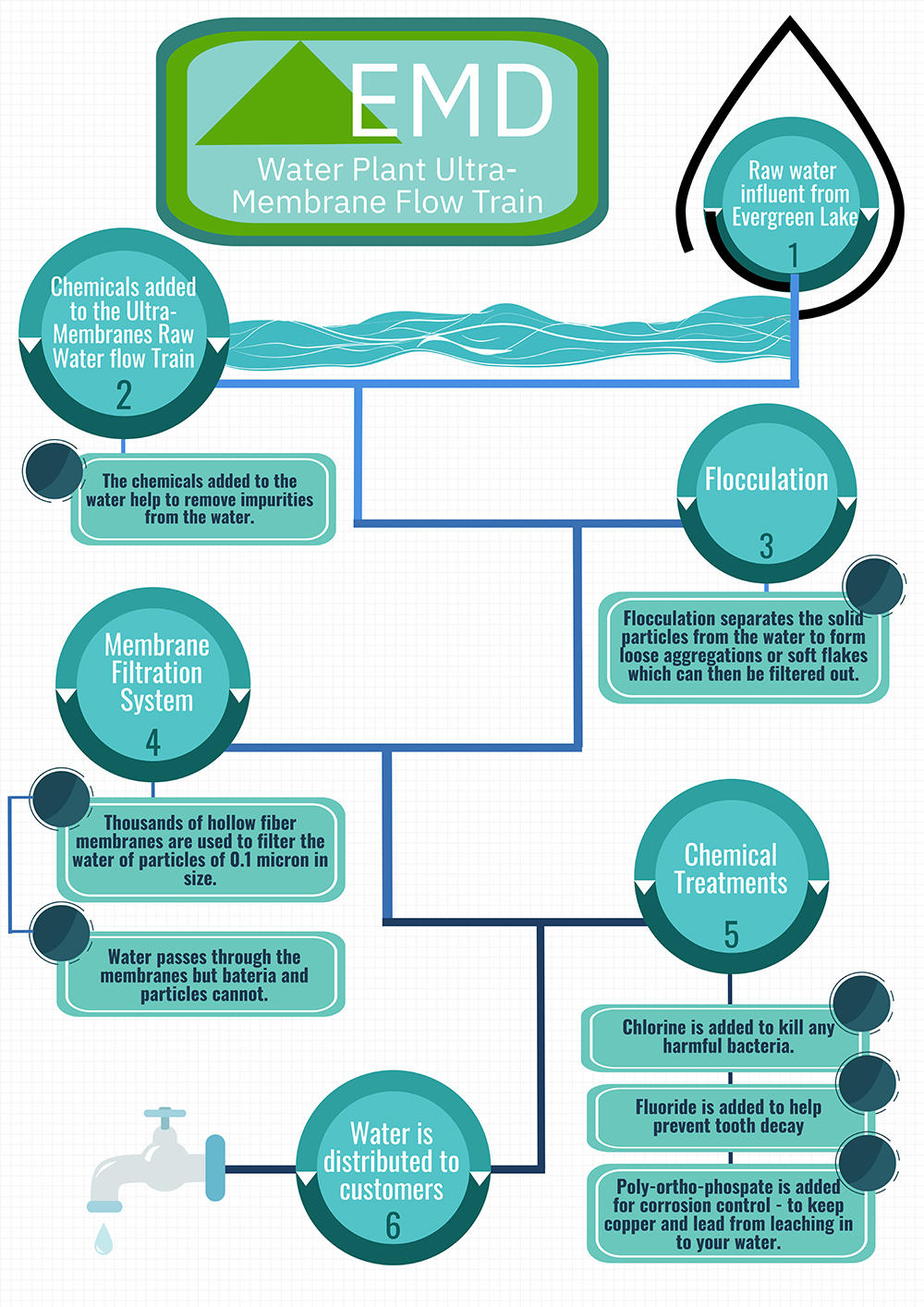Water Department
Evergreen Metro District Water Department
Department Manager, Kevin Rosemeyer
The Water Department is responsible for the operation and maintenance of the water treatment plant and the distribution system (pump stations and reservoirs). Operations of the water treatment plant consist of sampling and testing, evaluating, monitoring the system using computer technologies, and making equipment and process adjustments. Operations of the distribution system include adjusting pumps and reservoir levels to meet the needs of the community, as well as water quality sampling and cross connection control. The Water Department also installs water meters, inspects installations, and reads meters for billing purposes.
How is Evergreen's drinking water produced?
The drinking water for areas within Evergreen Metro District is treated at the water treatment plant. The source of drinking water comes from Evergreen Lake. Before the water makes it to customers' homes and businesses, it goes through several processes to make it safe to drink.
- Chemicals are added to the raw water coming into the plant. Potassium permanganate is used to remove iron, manganese, and taste and odor causing contaminants. Polyaluminum chloride, a coagulant, attracts particulates together like a magnet, which is done in flocculation, the next stage.
- Flocculation is a slow mixing of the water with the chemicals added. Larger particles are combined together so they can be more easily filtered in the filtration process.
- The Evergreen water plant uses a membrane filtration system, which is the heart of the water treatment plant. Thousands of hollow fiber membranes are used to filter the water of particles of 0.1 micron in size - thousands of times smaller than a human hair! Water is able to pass through the membranes, but bacteria and particles cannot.
- Three final chemicals are added before water goes out to the distribution system. Chlorine is added to ensure the safety of the drinking water, as it kills any pathogenic (harmful) bacteria on contact. Fluoride is added to help prevent tooth decay. A poly-ortho-phosphate is injected, which is used for corrosion control to coat the inside of piping and help keep lead and copper from leaching into customers' drinking water.
- After the water has been treated, it is pumped out to the distribution system through a series of pumping stations and water storage tanks before it reaches the tap.


